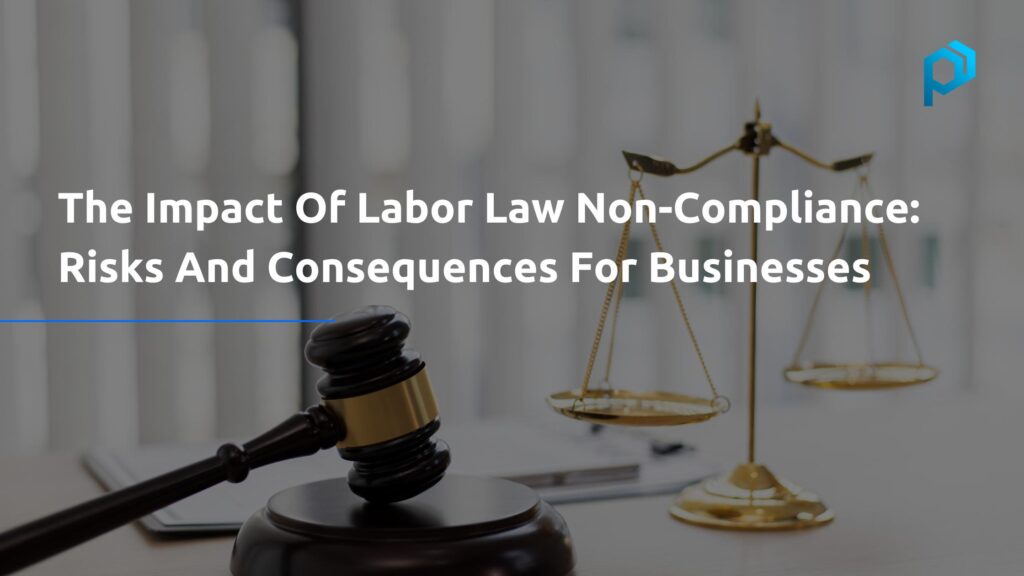The Impact Of Labor Law Non-Compliance: Risks And Consequences For Businesses
Labor laws play a crucial role in regulating the relationship between employers and employees, providing a framework for fair and just working conditions. These laws are put in place to protect the rights and interests of workers while ensuring a stable and productive workforce for businesses. Labour law non-compliance can have severe consequences for businesses, ranging from legal penalties to reputational damage. That’s because labor laws are not only a moral obligation but also a significantly important legal requirement.
Understanding Labor Law Non-Compliance
Definition Of Labor Law Non-Compliance
Labor law non-compliance refers to situations where businesses fail to adhere to the legal requirements and standards outlined in labor laws. This could involve violations of minimum wage laws, overtime regulations, workplace safety standards, discrimination and harassment laws, and other provisions meant to safeguard workers’ rights.
You might also like to read From Theory to Practice: Embracing Equity in Your Company.
Common Reasons For Non-Compliance
Non-compliance with labor laws can occur for various reasons, including lack of awareness about specific legal requirements, insufficient internal controls, intentional disregard for workers’ rights to maximize profits, or simply negligence in managing human resources.
The Risks of Labor Law Non-Compliance
Legal Consequences
When businesses fail to comply with labor laws, they face legal consequences. Government agencies responsible for enforcing labor laws, such as the Department of Labor (DOL) in the United States, can impose fines, penalties, and sanctions on non-compliant employers. Litigation may also arise, with employees filing lawsuits seeking compensation for labor law violations. All these alone are reasons enough to have a culture of labor law compliance for your organization.
Financial Impact
Labor law non-compliance can have significant financial repercussions for businesses. Fines and penalties imposed by regulatory authorities can be substantial, especially if violations are widespread and repeated. Legal fees for defending against lawsuits can add further financial strain. Additionally, businesses might face higher insurance premiums and difficulty obtaining business loans due to a tarnished reputation.
Employee Relations
Non-compliance with labor laws can negatively impact employee morale and trust in the company. Employees who feel their rights are not respected are more likely to be disengaged, leading to decreased productivity and higher turnover rates. Dissatisfied employees may also resort to collective action, such as forming unions or staging strikes, which can disrupt business operations.
Consequences for Business Operations
Labor law non-compliance can also disrupt business operations in various ways. Government investigations and lawsuits can consume valuable time and resources, diverting attention from core business activities. Moreover, negative publicity resulting from non-compliance can damage a company’s brand reputation and affect customer loyalty.
Understanding the impact of non-compliance in an organization will help you gain a better insight into the importance of maintaining a compliant workplace.
The Importance of Proactive Compliance
To avoid the risks and consequences associated with labor law non-compliance, businesses must adopt a proactive approach to compliance. This includes staying updated on labor laws, implementing robust internal controls and monitoring mechanisms, conducting regular audits, and providing ongoing training to management and employees on labor law requirements.
Conclusion
Labor law non-compliance poses significant risks and consequences for businesses. Beyond legal penalties, it can harm a company’s financial stability, employee relations, and overall reputation. To protect their interests and create a fair and sustainable working environment, businesses must prioritize compliance with labor laws and adopt proactive measures to ensure adherence. By doing so, they can not only avoid legal troubles but also foster a positive work culture that benefits both employees and the company as a whole.
Take control of your business processes and ensure compliance with labor laws with Procloz, the leading technology-driven services company. Don’t let labor law non-compliance jeopardize your operations and reputation. With our cutting-edge business process management and business automation solutions, we empower your organization to proactively address labor law requirements, streamline workflows, and minimize the risks associated with non-compliance. Boost productivity, foster employee satisfaction, and safeguard your business with Procloz. Contact us today.
The Impact Of Labor Law Non-Compliance: Risks And Consequences For Businesses Read More »


